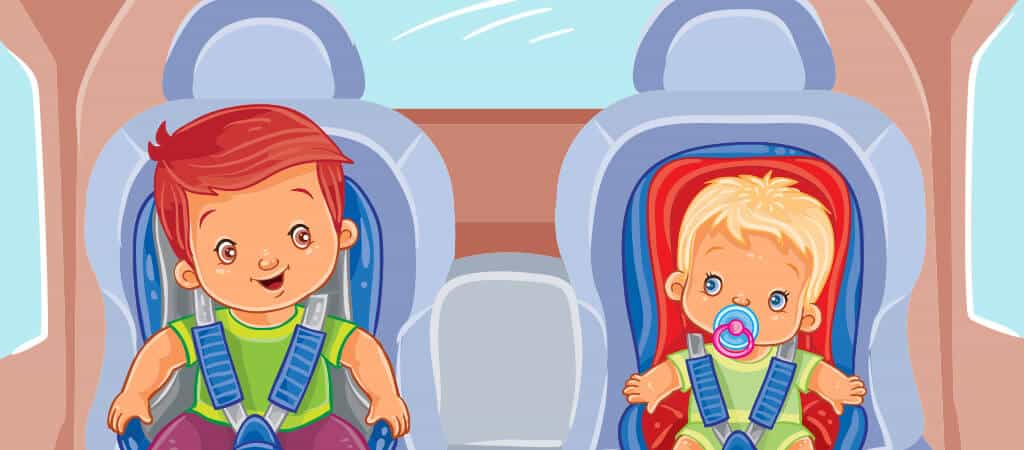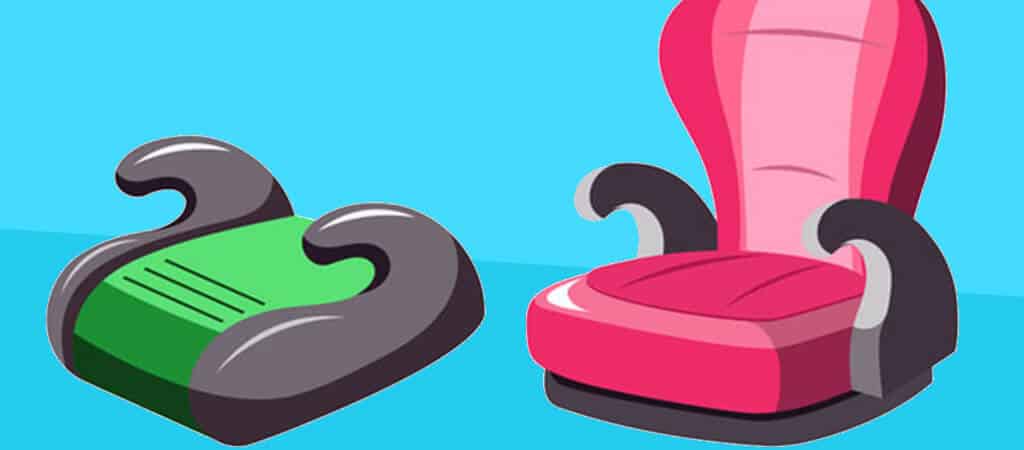The Ontario child car seat laws are geared to help protect children in vehicles in the event of an accident. As more information is learned about better safety precautions for our youngest citizens, the laws are subject to change to reflect new findings. For instance, rear facing child seats are now recommended for much older infants and toddlers than in years past.
For drivers, it’s important to stay up to date on the way these laws work for two reasons. First, if you are driving with a child in your car, and they are not in a proper seat for their age or height and weight, you can be fined up to $1,000. Second, and more importantly, these regulations are the best advice to protect young children in the event of an accident.
There have been some updates to these laws in recent years, so it’s important to understand exactly what’s required of you as a driver. Through the course of this article, we’ll discuss the Ontario car seat laws so that you know exactly how children should be secured in a vehicle at each age.
Ontario’s Highway Traffic Act

Ontario’s Highway Traffic Act is the law which regulates vehicles use, from licensing to rules for driving and penalties. This act is revised as new developments come to light for better safety for all of Ontario’s residents. For example, in 2019, the act was amended to change the height requirements on booster seats for children.
According to the law, drivers are responsible for passengers under the age of 16 and it is the driver who can be fined and ticketed if a child under that age is not properly seated and wearing a seat belt.
Understand Canada Car Seat Laws

Canada’s car seat laws are laid out specifically to protect every size passenger. Realizing that children grow at a different pace, the laws reflect both weight and height requirements, as well as age requirements. What parents and adults need to understand is that these requirements are made after careful study and consideration on dangers that can occur due to an accident when children are secured in various ways.
The car seat laws specify the type of seat for different ages. The break down is:
- Infant Car Seats. These are rear-facing car seats which are designed to protect small infants.
- Front Facing Car Seats. These seats are designed for toddlers and young children.
- Booster Seats. These seats are designed for older toddlers and young children who are too big for car seats but not big enough to fit the car seatbelt properly.
Rear-Facing Car Seat Laws in Ontario

Rear-facing seats were once only used for very small infants. The child was often switched to front facing as soon as they could hold their own head up securely. The rule now is that rear-facing child seats should be used for babies up to 20 pounds (ca. 9 kg), which is a significant change for many older generation parents whose children were much smaller.
It’s recommended that parents follow the guidelines laid out by the car seat manufacturer, which may allow you to keep the baby in the rear facing seat until they are bigger than the 9 kg mandated by the law, which may offer better protection for your baby.
Toddler Seats

Toddler seats or front facing car seats are recommended for babies once they’re too old and have grown too much for their rear-facing car seat. It’s important to move them up to the next level when it’s appropriate. Using a seat designed for a child much smaller or larger can leave them less protected in an accident.
Front facing child seats are designed with a special harness seat belt that is better for protecting young children in a collision than the standard car seat belts, which are designed for adults. The law states that children should be in toddler seats from 20 to 40 pounds or 9 kg to 18 kg.
You should also pay attention to the manufacturer’s recommendations on use. The seat you purchase may be designed for children of a much larger weight, which can offer better protection for longer.
Booster Seats

Booster seats are designed for children after they’ve outgrown their front facing child seat. The booster allows smaller children to reach a height where the adult seatbelt fits their frame adequately. By law, children between 18 kg and 36 kg should be in a booster seat. The law also states that children who are 8 years old or younger or stand at 4’9″ or less should be using a booster seat.
Registering Car Seat

When purchasing your car seat, look for the label with the National Safety Mark on it. This means that the seat and manufacturer meet the government guidelines for safety. While you do not need to register the individual seat with a governing body, you should make sure that you register with the manufacturer so that you’re notified of any recalls, if possible. Or set alerts that notify you of any recalls in that type of product. You should also seek expert advice to install the seat properly, if you’re having any difficulty understanding the directions.
Additional information about Car Accidents here.
FAQ
When can a child face forward in a car seat in Ontario?
A child can face forward after they reach 9 kg or 20 pounds. The car seat may allow them to remain rear facing for longer and it’s recommended that parents follow the manufacturer’s rules for use.
Do you need a car seat in a taxi in Ontario?
This is a loophole in the law. A taxi service is not mandated to provide car seats for underage passengers and will not be ticketed or fined if your child is improperly restrained. It’s up to the parents whether they want to carry their own car seat for safety purposes.

















